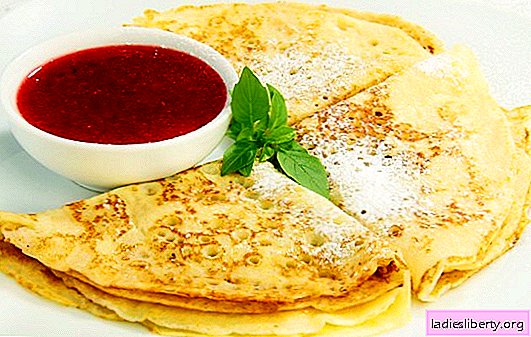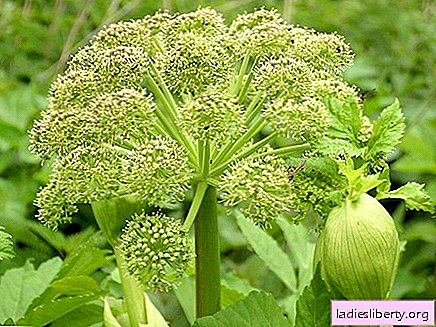
With the help of taste, a person distinguishes between useful and harmful food. So, more recently, in 2002 it was discovered that in the human language there are special receptors that are responsible for the taste called minds. Roughly speaking, minds are sodium glutamate - a derivative of an amino acid, a pointer by which a person finds protein-rich foods in nature.
Monosodium glutamate (fortifier / flavor enhancer) is a common food supplement under the E621 index. It is a white crystalline powder that looks like table salt or sugar. Get it from the amino acid glutamate or glutamine amino acid, which is one of the most common amino acids in nature. Also, it is not one of the essential amino acids, which means that the human body is able to synthesize it in the required quantities. It performs various functions in the human body and is found in almost all food products. There is no chemical difference between glutamate in sodium glutamate and glutamate in natural products. It is popular in Asian cooking and is used in all kinds of processed foods in Western countries.
List of foods with the most glutamate (%)
· Cow's milk - 0.821;
· Breast milk - 0.251;
· Parmesan cheese - 11.047;
Eggs - 1.606;
Chicken - 3.353;
Duck - 3.705;
· Beef - 2.879;
Pork - 2.348;
· Cod - 2.110;
Mackerel - 2.418;
Salmon - 2.457;
Green peas - 5.783;
Corn - 1.895;
Carrot - 0.251;
Spinach - 0.328;
Tomatoes - 0.378;
Potato - 0.460.
How does he act?
Glutamate functions as a neurotransmitter in the brain. This is an “exciting” neurotransmitter. Means that it stimulates nerve cells to transmit a signal. Some claim that monosodium glutamate leads to excessive amounts of glutamate in the brain and excessive stimulation of nerve cells. For this reason, it is referred to as excitotoxin. Although, in fact, there is no convincing evidence that monosodium glutamate acts as an excitotoxin when consumed in normal amounts.
Can glutamate be calculated in food?
Food manufacturers are not stupid, and they grasped the fact that some people want to avoid eating this food supplement. As a result, do you think they responded by removing glutamate from their products? Well, maybe some, but most of them just tried to "clear" the labels of their products. In other words, they tried to hide the fact that glutamate is an ingredient. How do they do it? Using names that you will never associate with glutamate.
Food manufacturers list the “glutamate sodium” ingredient on food labels, but they do not need to label ingredients containing free glutamic acid, although it is the main component of glutamate. There are over 40 labeled ingredients containing glutamic acid, but you will never recognize them by their names alone. In addition, in some products, glutamic acid is formed during processing, and, again, food labels give you no way to know for sure.
Ingredients that always contain monosodium glutamate:
Glutamate
Glutamic acid
· Brewer's yeast;
Casein
Gelatin
· Hydrolyzed protein;
· Textured protein.
Fears and Negative Effects
It is considered:
· There is a lot of sodium in monosodium glutamate. In fact, by weight - 13.5%, in salt - 40%.
· Because of glutamate, it’s impossible to stop eating all sorts of not very healthy foods (eat these soft French rolls ...).
· In case of abuse, sensitivity to the taste of food is lost.
Causes psychological dependence, like sugar or salt.
· Particularly toxic to pregnant women and causes terminal conditions.
· Unscrupulous manufacturers hide the low quality of their products with glutamate.
In fact, this is all no more than fears.
Scientists have long been determined that glutamate in reasonable doses is harmless.
Only a few people may experience adverse effects after consuming monosodium glutamate. This condition is called "Chinese Restaurant Syndrome" or "a complex of symptoms of sodium glutamate." In one study, people with self-esteem sensitivity consumed either 5 grams of glutamate or a placebo. 36.1% reported a reaction with glutamate, compared with 24.6% with placebo.
Symptoms include headache, muscle fatigue, numbness / tingling, weakness, and redness. This study shows that glutamate sensitivity is real.
In one study, a mega-dose of monosodium glutamate increased its blood count by 556%. However, dietary glutamate should have virtually no effect on the human brain, since it cannot cross the blood-brain barrier in large quantities.
Trying to prove the harm of glutamate, the Japanese went the farthest. They conducted experiments on rats and managed to bring them to blindness (horse doses of glutamate are harmful to the retina). True, in those experiments, 1/5 of the rat ration was pure monosodium glutamate (20 times the norm). It should be understood that if you feed the rat with sugar alone, then it will have diabetes. Which of course "proves" the harm that the rat ate. Everything is good in moderation. Moreover, even the concept of “measure” is a controversial thing.
The threshold dose of glutamate, which causes symptoms, can be about 3 grams. However, keep in mind that 3 grams is a lot, about 6 times the average daily consumption of an ordinary person.
Monosodium glutamate and weight loss
The supplement enriches the taste and can affect the overall intake of calories. Some glutamate products have a richer flavor than others. The idea is that eating foods that satisfy hunger more quickly should reduce calorie intake, which can help fight weight loss. There is some opinion and evidence that adding glutamate to food can have this effect. To investigate this, researchers consumed glutamate-flavored soups, and then measured the number of calories they “ate”. These studies have shown that glutamate can accelerate satiety and the onset of a feeling of fullness, thereby helping people consume fewer calories in subsequent meals.
So where is the truth?
As is often the case in nutrition, the truth is somewhere between two extremes. Accepting the evidence, it seems pretty clear that monosodium glutamate is safe in moderation.
However, mega doses of 6-30 times the average daily intake (one-time) can be harmful.
If you personally feel that you are negative for monosodium glutamate, then you should avoid it. Simple and clear. But if you can tolerate glutamate without any symptoms, then there seems to be no good reason to avoid it. As said, glutamate is usually found in processed foods. If you already have a balanced, natural-based diet, then your glutamate intake should be low by default.











